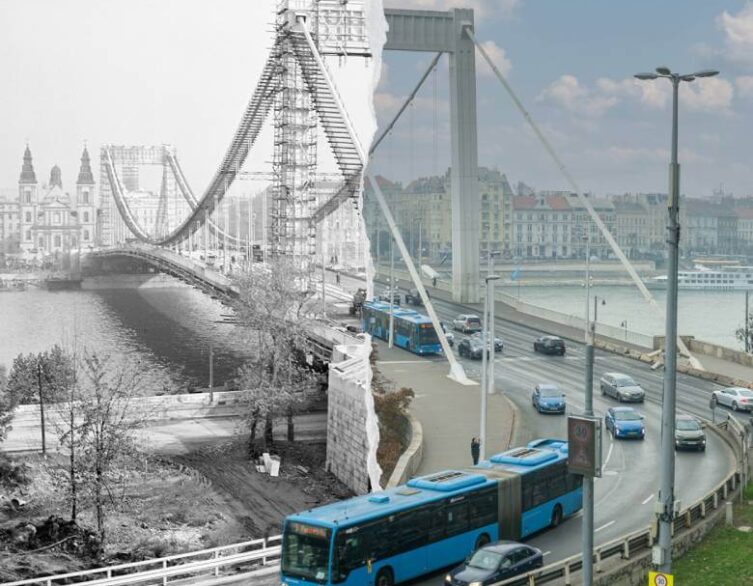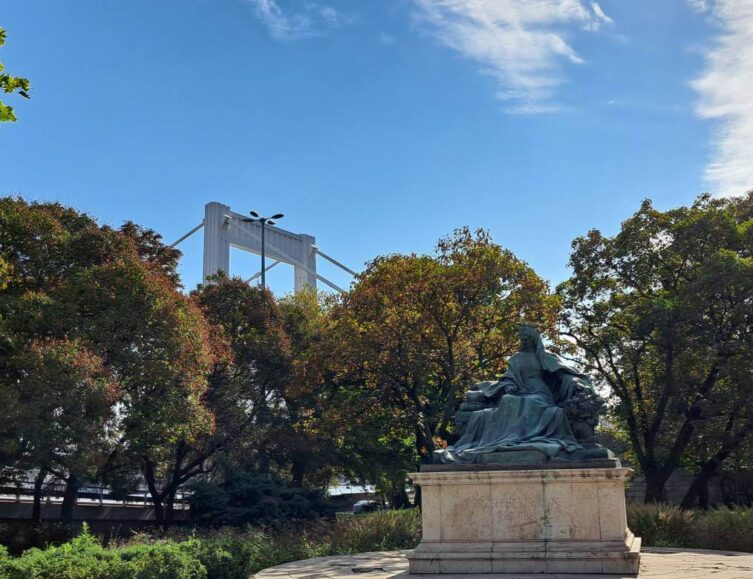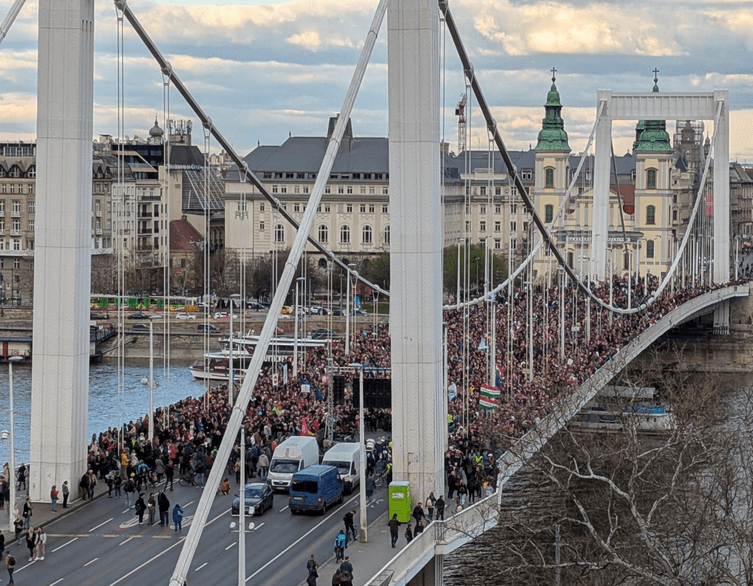The Elisabeth Bridge in Budapest Turns 60!

Happy birthday to the Elisabeth Bridge in Budapest! It’s been exactly 60 years since the current Elisabeth Bridge was inaugurated, replacing the original one that was destroyed during World War II. Since its opening on November 21, 1964, this iconic bridge has played a crucial role in Budapest’s transportation system, with eight daytime and five nighttime bus routes crossing it, including the famous 7 bus. But that’s not the only interesting fact about this now 60-year-old bridge. Let’s dive into some more fascinating details!
The Bridge’s Appearance
From a distance and up close, the bridge appears white, but its actual color is light gray, not white. The decorative lighting of the bridge was designed by the world-renowned Japanese artist Isii Motoko, and Japan also contributed a significant amount to the project’s realization.
Inspiration and Design
It’s no coincidence that the rebuilt Elisabeth Bridge in Budapest resembles the similarly 2×3 lane Mülheim Bridge in Germany: Hungarian engineers drew inspiration from it. The bridge was named after Queen Elisabeth of Wittelsbach, the beloved “Sissi” of Hungarians. The new bridge is wider but much lighter, weighing 6,300 tons.
Best deals of Budapest

Image by Cacor
A Bit of History
The Elisabeth Bridge has always been a subject of debate, and even today, some people regret that the old Elisabeth Chain Bridge was not rebuilt. However, the current bridge holds numerous interesting facts, some of which we’ve compiled for its 60th anniversary.
- The old bridge was blown up by retreating German troops on January 18, 1945. Until 1958, the plan was to rebuild the original chain bridge, which is why the remaining Pest pier was left standing. It was only demolished in 1959-1960.
- On October 15, 1958, the government decided to build a six-lane cable bridge here. This decision was due to a change in transportation policy, as supporting car traffic became a priority. Several expressways were planned in Budapest, with the east-west route following the BAH junction – Rákóczi Road – Baross Square line, originally with multi-level interchanges. This traffic required a bridge wider and with a higher capacity than the previous one.
- The Elisabeth Bridge is actually a highway bridge. The Mülheimer Brücke in Cologne, originally built in 1927 but blown up during the war and rebuilt in 1951 with a lighter, more slender design, served as a model for its construction. Our Elisabeth Bridge is very similar to the German bridge in many aspects.
Incorporating Elements of the Old Bridge
The new Elisabeth Bridge uses some elements and solutions from the old crossing. It has the same pendulum pylons as the old one, meaning the towering support pylons are not fixed to the ground but move and can rotate at their base, hence the name “pendulum pylon.” The new bridge stands on the original foundations, and if you walk down to the base of the pylons, you can see the “Diósgyőr 1898” inscription on the lower plate of the roller. The cables also run in the same place as the old bridge’s chains, and the pylon gates are the same height.
If the cables run where the chains were, how can the bridge be wider? On the old bridge, the sidewalks were also located inside the two chain rows, while on the new structure, they run outside the cables, so the old bridge’s sidewalks are now traffic lanes.
Construction and Opening
The original completion deadline for the new bridge was November 7, 1964, the anniversary of the Bolshevik coup in Russia, known as “the Great October Socialist Revolution,” which was one of the biggest holidays of the regime. However, the builders did not finish by that date, so the bridge was only opened to traffic on November 21, 1964. A huge crowd celebrated the inauguration, with people literally hanging on the tops of trams.
At the time of its opening, there were trams on the bridge, with many routes using it. The trams ran in the middle of the bridge and had stops at the bridgeheads. However, tram traffic was always intended to be temporary, which is why there was no proper substructure built for the tracks; they were directly attached to the structure, causing the vibrations of the tram cars to be transmitted to the bridge without dampening, leading to damage within a decade. This was one of the reasons why tram traffic ceased here on December 31, 1972, after the opening of the metro.
Unique Features and Maintenance
At the time of its opening, there was another minor difference compared to the current state: the bridge had unique lamps designed specifically for it. However, these “UFO lamps” were later removed and replaced with completely traditional road lighting fixtures.
The bridge’s color is actually not white but very light gray. During its construction, there were newspaper articles mentioning that the Elisabeth Bridge would be the same color as its predecessor, i.e., ocher yellow, but in the end, they settled on very light gray (practically white). Of course, bridge painting involves multiple layers, each with a different color; on the Elisabeth Bridge, the layer under the top is light green. This is necessary so that if the top coat is damaged somewhere, the problem can be immediately spotted.
The bridge has not required a general renovation throughout its history. Of course, it has been repainted several times and is continuously inspected – like all bridges – and any issues are fixed. Its most extensive modification took place after the removal of the tram tracks when it was also re-asphalted. However, removing the old asphalt in 1975 was not so easy; the technology for it was not available in Hungary at the time. They even tried to melt it with a decommissioned aircraft jet engine, but in the end, the old asphalt was removed using foreign technology.
Conclusion
60 years ago, on November 21, 1964, the new Elisabeth Bridge was opened in Budapest. Among the bridges in the Hungarian capital blown up by the Germans, the Elisabeth Bridge was the last to be rebuilt, but based on new plans, as road traffic had outgrown the old structure. Since then, it has become a proud symbol of the city, with its unique design, historical significance, and crucial role in Budapest’s transportation network. Happy 60th anniversary, Elisabeth Bridge!
Image source: BKK
Related news




















